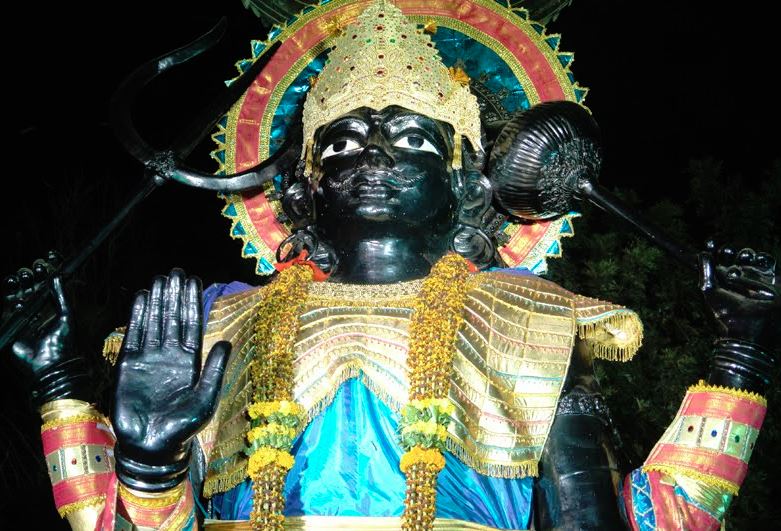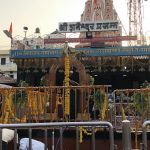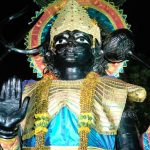If you wish to experience a truly distinct example of Hindu festivities, do not miss the opportunity to attend the Shani Jayanti celebration. Also known as Shani Amavasya, the festival pays homage to Lord Shani and is extremely popular in the Northern states of India. Lord Shani rules the planet Saturn, which is extremely significant in Hindu astrology. Hindus celebrate Shani Jayanti in order to ward off negative omens and pray for a prosperous life.
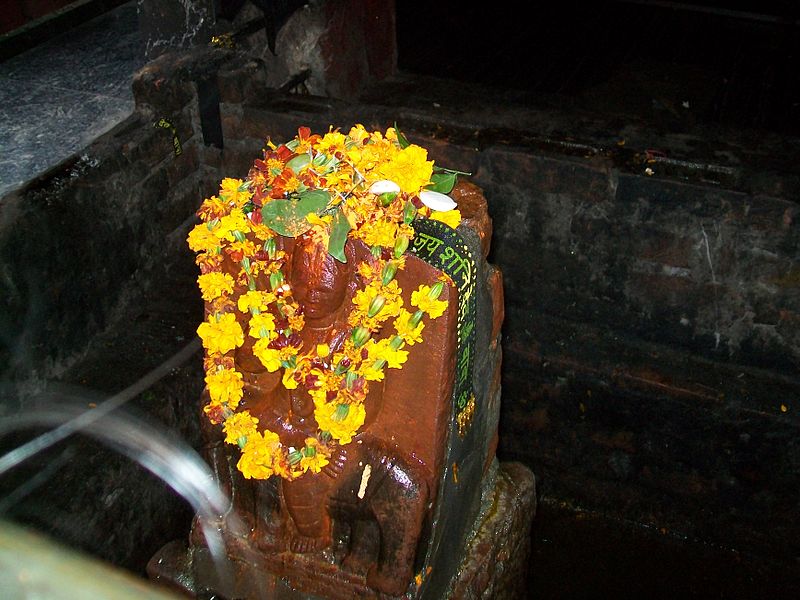
What Is Shani Jayanti?
Shani Jayanti is a Hindu festival celebrating the birth of Lord Shani, who is the son of Lord Surya and the ruler of the planet Saturn. Hindus celebrate Shani Jayanti on Vaishakh Vadya Chaturdasi Amavasya and follow several traditions in order to appease Lord Shani. Shani Jayanti falls in the Hindu lunar month of Vaisakh.
According to Hindu belief, worshipping Lord Shani is essential in order to keep evil influences at bay and to overcome hardships. In 2019, Shani Dev Jayanti will be celebrated on Monday the 3rd of June. Shani Jayanti and Shani Amavasya are different names for the same festival. Shani is also the ruler of Saturday, which is why devout Hindus often perform a Shani puja every Saturday. The festival is particularly important in the state of Madhya Pradesh.
Background of Shani Jayanti
The Shani Jayanti story is an extremely interesting one and originates in ancient Hindu mythology. According to legend, Lord Surya and his wife Sandhya had three children together. However, Sandhya felt inferior beside her radiant husband. She thus created a female figure named Chaya from her own shadow and assigned her to perform the duties of Surya’s wife. Chaya accordingly bore Surya three more children while Sandhya performed penance to heighten her powers.
While Chaya was carrying Lord Shani, she performed penance to Lord Shiva beneath the hot sun, which darkened Lord Shani’s complexion. Surya, upon seeing this, suspected that Shani was not his own son and thus angrily confronted Chaya. In order to avenge his mother, Shani cast an angry gaze upon Surya that turned his complexion black as well. Surya turned to Lord Shiva for help, who explained the truth to him. Surya begged Shani’s pardon, after which he recovered his own complexion.

Astrological significance of Shani Jayanti
According to Hindu astrology, Shani is a cruel planet who is a judge of our misdeeds. Shani has a strong association with poverty, hardships and illnesses. Those with a weak Shani in their horoscope are thus likely to face multiple obstacles and slow progress. In such cases, Hindus can benefit by celebrating Shani Jayanti. In addition, Shani, when combined with either the moon or the planet Rahu, creates another strong negative effect on the horoscope. Individuals with horoscopes like this will face continuous setbacks and difficulties even if they have the potential to do well. Such devotees will also find it beneficial to worship Lord Shani during Shri Shani Jayanti and ask for good fortune.
Celebration of The Festival
On Shani Mahatma Jayanti, those who have weak or negative Shani in their horoscopes perform a special Shani Jayanti puja to seek the blessings of Lord Shani. Devotees may also fast on this day. The fast follows the same processes as the regular Shanivar Vrat or Saturday Fast that devout Hindus observe. Many priests advise that devotees chant the Shani Mantra Japa 23000 to ensure long life and protection from evil. They may also chant the Shani stotra and ‘Om Sham Shaneshchraya Namah’ for further blessings from Lord Shani.
Devotees who keep idols of Lord Shani at home bathe them with Gangajal, oil and panch-amrut on Shani Jayanti. After the bathing process, the devotees place a necklace made of navratnas around the deity’s neck. This necklace is known as nauratnahaar. It symbolises the nine planets and is designed to appease Lord Shani. Hindus also feed ants by filling ant-holes with jaggery and wheat on Shani Jayanti as part of the ritual. Many also believe that devotees who donate black clothes, mustard oil and sesame (black til) on this day will receive the blessings of the god.
Special prayers on Shani Jayanti
Devotees who seek protection against black magic and curses may perform a special yagna or homam in the presence of a respected purohit. They may also hang horseshoe rings in their homes and wear horseshoe rings on their fingers as protection from witchcraft. Those about to undertake a new venture should always seek Lord Shani’s blessings on Shani Jayanti to ensure success and rid themselves of Shani Dosha.
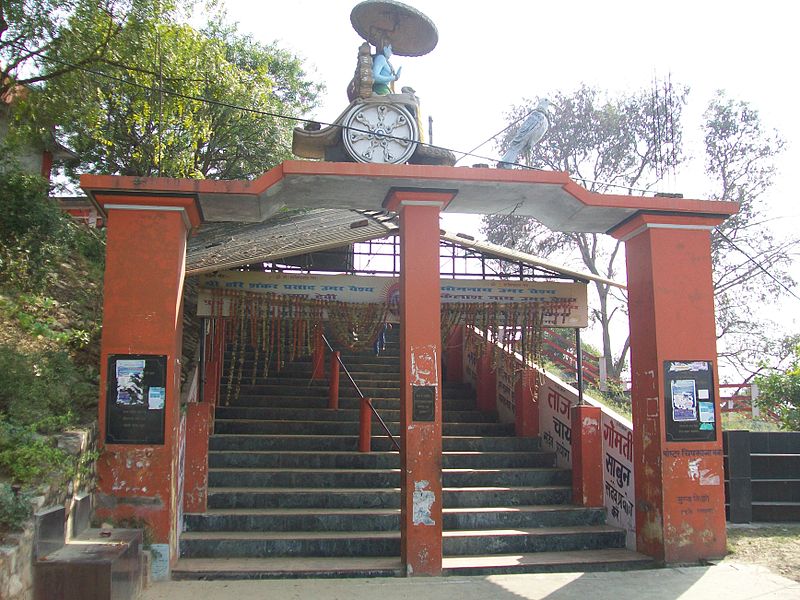
Many devotees visit Shani temples on this day to offers prayers. Famous Shani temples in India include the Kokilavan Dham Sani Dev Temple and the Thirunallar Shani Temple. Hindus may also perform the special Navgraha Shanti Puja to please Lord Shani when praying for something significant. Given that Shani can impose harsh punishments and enhance bad fortune, devotees should perform all the rituals strictly according to tradition. This way, they can avoid Lord Shani’s wrath and obtain his blessing. They can also obtain his blessings by distributing food and clothes to needy Brahmins.
Some special pujas to perform
Those with specific weaknesses in their horoscope or with specific wishes to fulfil can perform special pujas to appeal to Lord Shani. Here are some of the commonly performed pujas.
Shani Graha Shanti Homam
This is a homam that restores marital peace and improves health and prosperity. Devotees perform Kalasa Avaganam, a process in which they fill a pot with fragrant water and cover it with coconut and decorations and then invoke the power of Lord Shani. If he is pleased, his power enters the pot and he will thus answer the devotees’ prayers.
Mahakali Homam
The only power that can keep the harmful influence of Shani at bay is Goddess Mahakali. Praying to her has immediate results because she can help devotees fulfil aspirations. By praying to Mahakali, devotees can ward off witchcraft and black magic and even recover from serious illnesses. Certain placements of Shani can result in serious misfortunes for devotees. Praying to Mahakali can guard against sudden and severe misfortunes such as death, evil spirits, debt, betrayal etc.
Gulika Puja
Also known as Mandi Puja, this ceremony pays homage to Gulika, who is Shani’s offspring. Gulika has a prominent position in an individual’s birth chart. If not positioned favourably, Gulika can bring bad luck to the individual and spoil marital prospects. By praying to this planet, devotees can ward off those negative effects and thus discover new opportunities.
Dharmaraja Puja

This is a special puja, performed during Shani Jayanti, that devotees perform to please Yamaraj, the god of death. Yamaraj controls the amount of pain and suffering that an individual has to undergo. He also decides on the nature of the individual’s death. By offering puja to Yamaraj, individuals can thus relieve their suffering and protect themselves from painful deaths.
Thirunallar Temple Puja
The Thirunallar Temple is a very popular Shani temple in Karaikal, Pondicherry. The deity who presides here is Dharbaranyeswara, a manifestation of Lord Shiva as a linga. At certain malevolent moments, Lord Shani colonises a particular zodiac sign and thus afflicts all those born under that sign with bad luck. Praying to Lord Shiva at this temple on Shani Jayanti can, therefore, help to keep that bad luck at bay.
Shani Yantra
The Shani Yantra is a powerful way for devotees to obtain good luck and succeed in various endeavours. A yantra with the Shani mantra carved into it is even more powerful than an idol of Lord Shani. Devotees who possess such a yantra are thus safe against the malevolent effects of Shani and achieve success in business affairs. The yantra also protects them against depression.
Given the all-powerful nature of Lord Shani and his influence over both good and bad fortune, devout Hindus regard Shani Jayanti as an extremely important festival. If you wish to experience true Hindu devotion, do not miss out on a celebration of Shani Jayanti.




